Crocodiles, sharks and snakes are all on Australia's ‘most feared list’, but you don't hear much about the Box Jellyfish!
With over 80 reported deaths from Box Jellyfish in Australia since they started keeping count, here's some info to help you avoid adding to the statistics.
What are box jellyfish?
There are over 50 known species of box Jellyfish around the world which are distinguished by their cube shaped body or ‘medusae’ as it is officially called.
They have up to 15 tentacles hanging from each of the four corners of their body which can be up to 3m in length.
These tentacles contain thousands of venom filled ’stinging cells’ which are activated on contact with other animals like fish and unfortunately, humans.
Box Jellyfish have actually been called "the world's most venomous creature” and while not every species of Box Jellyfish is dangerous, there are several highly venomous varieties found in Australian waters.
From a travellers point of view the best idea is to treat jellyfish the same as you would snakes - unless you know for certain that it is not venomous, then assume that it is and do what you can to avoid getting stung.
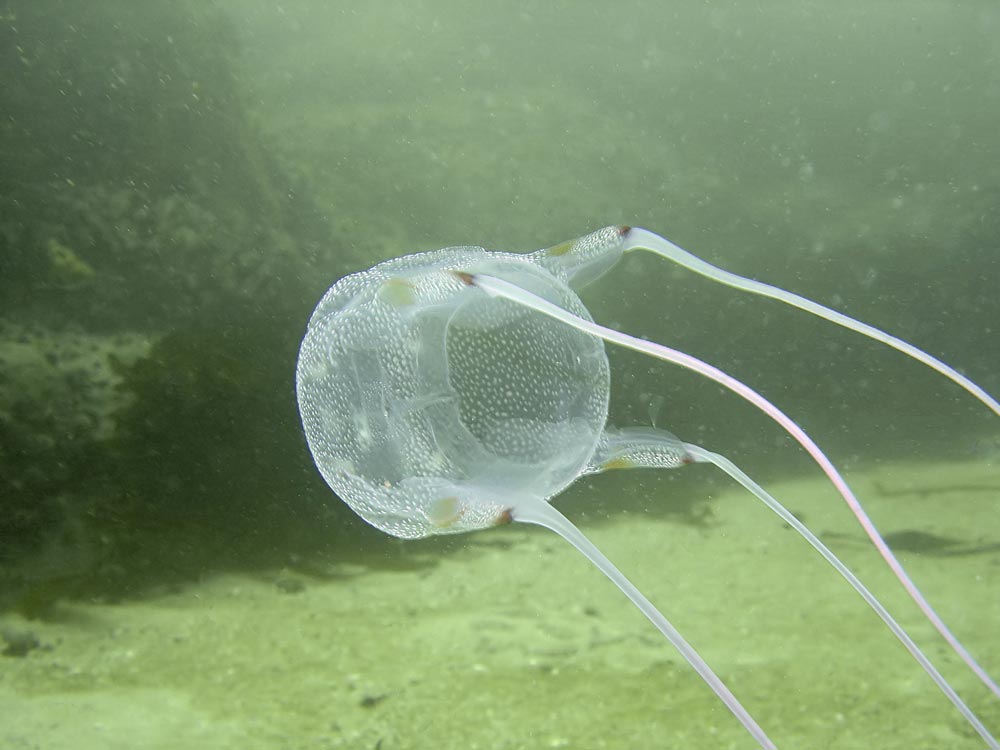
What types of Box Jellyfish live in Australia?
The two most common types of box Jellyfish found in Australian waters are the 'Chironex fleckeri' commonly known as the ’Sea Wasp’ and the 'Carukia barnesi' also known as the Irukandji.
The ’Sea Wasp’ is one of the largest known and most venomous varieties of Box Jellyfish growing up to 20 cm along each side of its cube shaped body with up to 60 tentacles hanging beneath it. Most Box Jellyfish encounters in Australian waters are with the ’Sea Wasp' and consequently they have caused the most deaths.
The Irukandji is much smaller by comparison and only has a single tentacle hanging from each corner of its body.
They are also highly venomous but with less stinging cells to attack with they are not as dangerous to humans as their larger relatives.
Where are box jellyfish found in Australia?
Box Jellyfish are found in warm tropical and sub tropical coastal waters, mangroves and estuaries. They are also found further out to sea but are more prevalent closer to the coast.
They have been found as far south as Geraldton in Western Australia and Bundaberg in Queensland.
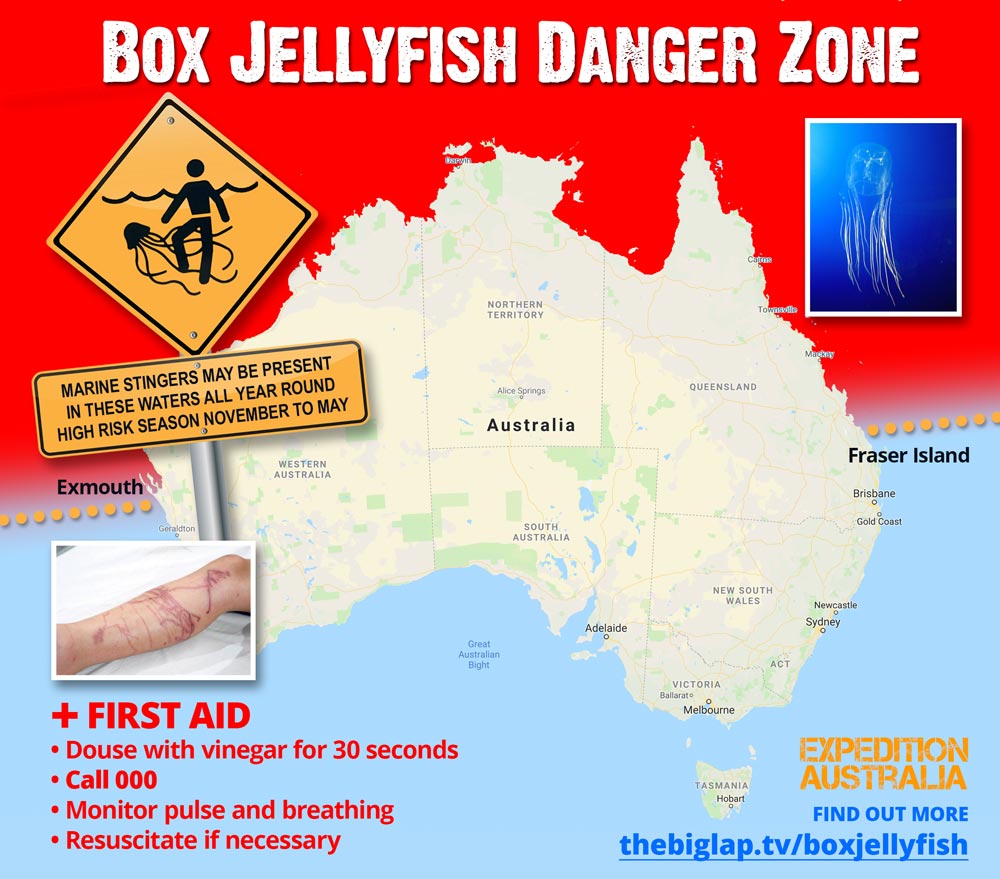
When is Box Jellyfish Season in Australia?
Box Jellyfish can be found all year round in Australia but are most prevalent in the summer months between November and May.
How do box jellyfish sting?
Unlike other types of jellyfish which drift around and rely on chance encounters with their prey, Box Jellyfish are able to propel themselves through the water and actively hunt their food.
While Box Jellyfish don’t hunt humans, they are difficult to see in the water and people swimming nearby will inadvertently swim across the Jellyfish and come in contact with the tentacles.
The tentacles drag across the victims skin activating the stinger cells and barbs inject neurotoxic venom into the skin causing extreme and intense pain and respiratory distress.
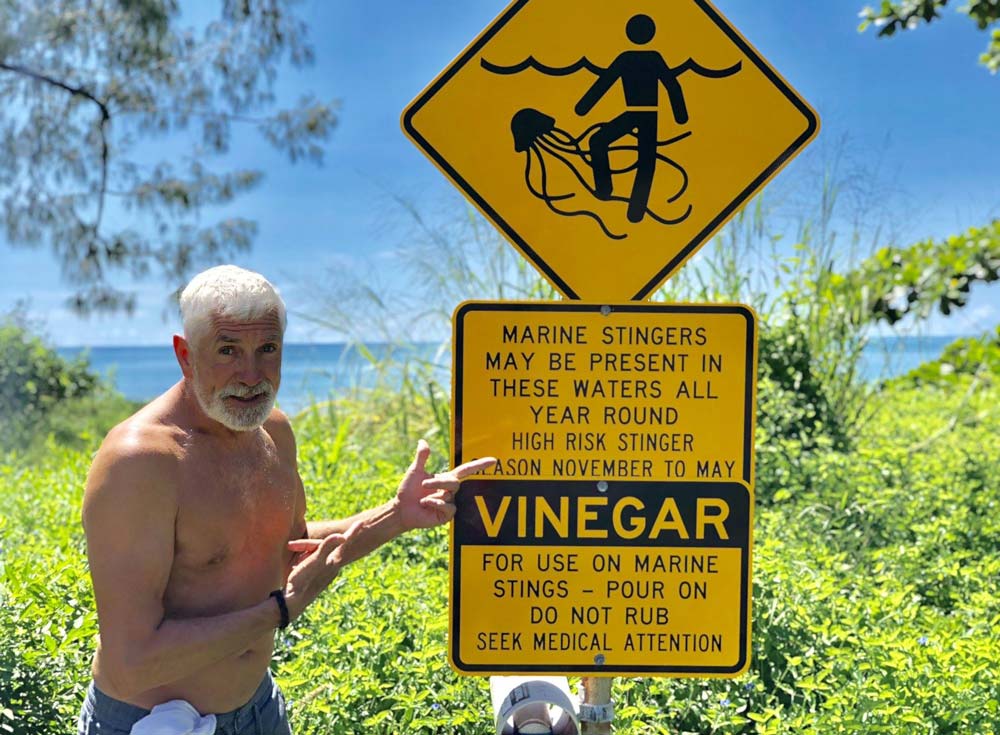
Are Box Jellyfish stings deadly to humans?
Yes they can be.
There have been more than 80 Box Jellyfish deaths in Australia since 1883 so they do pose a serious risk.
If the contact with the tentacles and subsequent dose of venom is large enough it can result in cardiovascular collapse and potentially death within minutes.
Victims sometimes lose consciousness and drown or suffer a heart attack before even reaching the shore.
How to avoid a Box Jellyfish Stings
The venom filled stinging cells in the Box Jellyfish tentacles are automatically activated on contact with skin of other animals including fish and humans.
They are not however activated on contact with synthetic materials like lycra or neoprene (wetsuit material) so a simple way of avoiding being stung is to wear a wetsuit or a ’Stinger Suit’ which is a lycra body suit designed to cover the skin from head to toe.
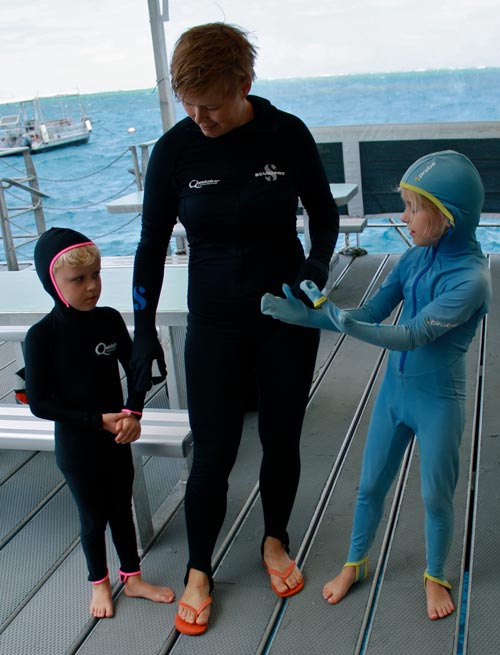
Stinger Suits are great in the warmer tropical waters where a wetsuit is not required but protection from box jellyfish stings is.
They are very popular with snorkelers, body borders and even scuba divers.
The stinging cells from the box Jellyfish remain active even after they have broken away from the animal and it’s not uncommon to feel the occasional sting on exposed skin while swimming in tropical waters, even if there are no signs of any jellyfish around.
Having experienced a few of these myself on my face and hands while scuba diving it feels similar to a small ant bite - if that is the pain level from a single cell, I can only imagine how painful it would be to be hit by thousands all at once.
What are the signs and symptoms of Box Jellyfish stings?

(The following information has been sourced directly from the Queensland Ambulance Service)
- immediate burning pain to the skin
- savage, multiple whip weals with a frosted ladder pattern in the sting marks
- adherent tentacles on the skin are usually present
- irrational behaviour due to pain
- in major stings there can be cessation of breathing and cardiac arrest.
Box Jellyfish treatment and first aid
- carefully remove the casualty from the water
- avoid rubbing the sting area
- immediately douse the sting area with vinegar for at least 30 seconds
- if vinegar is not available, carefully remove tentacles off skin and rinse well with seawater (Being careful not to contact them with your own skin)
- call Triple Zero (000) for an ambulance
- regularly monitor and record the casualty’s pulse and breathing
- begin resuscitation if necessary
- anti-venom is available



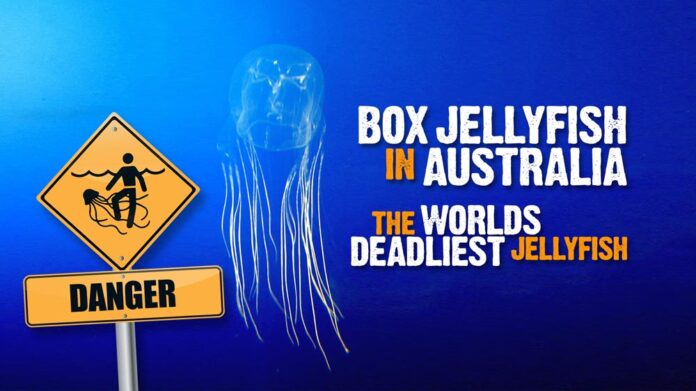
Hi, I think that this article must be read by all tourists who decide to visit Australia. No matter how much we love to blithely splash in its waves, one should not forget that danger may be hidden in them. Namely jellyfish - often cute, but mercilessly stinging. And even if they are almost entirely composed of water, the stinging cells of many of them contain poison, which is injected into the victim faster than a bullet flies. So it's time to find out which jellyfish should not be approached even for the sake of a beautiful picture and what to do if you are stung. Good luck!